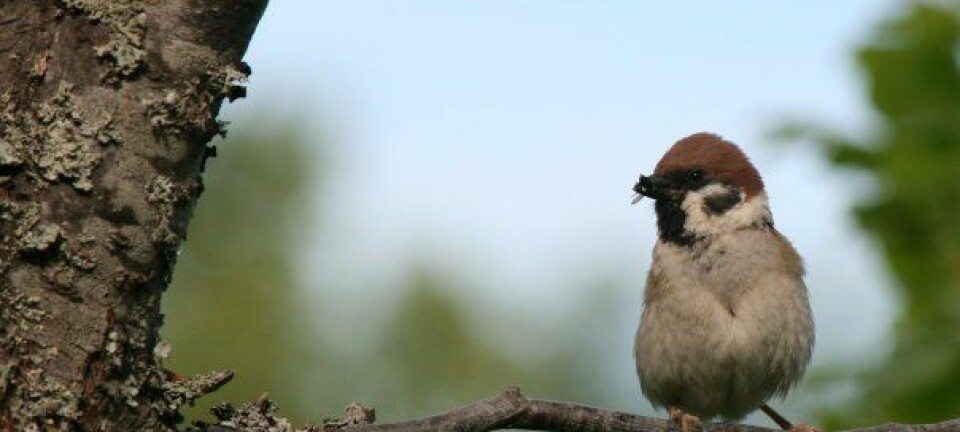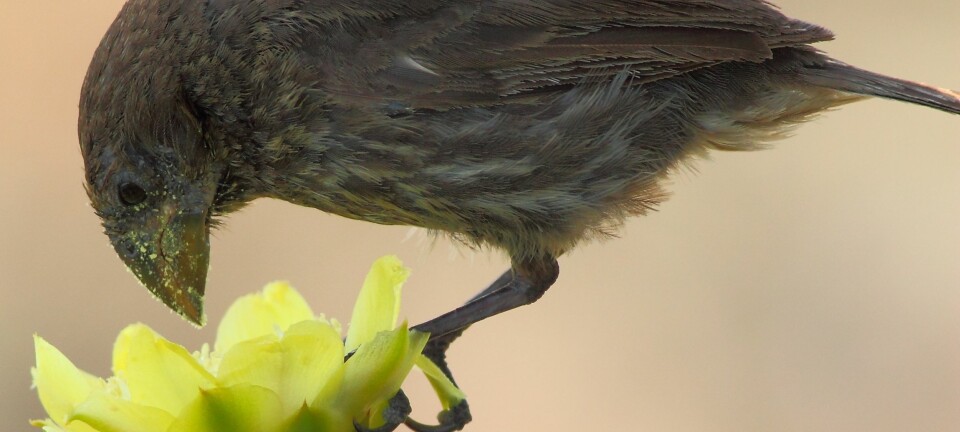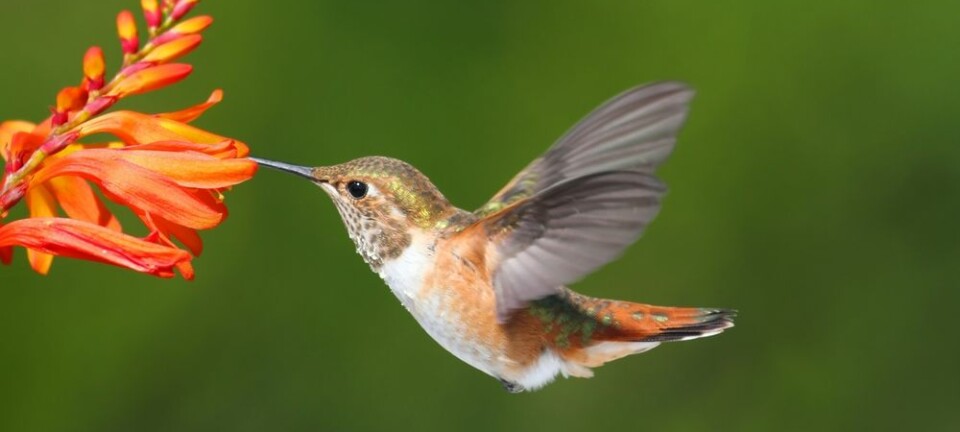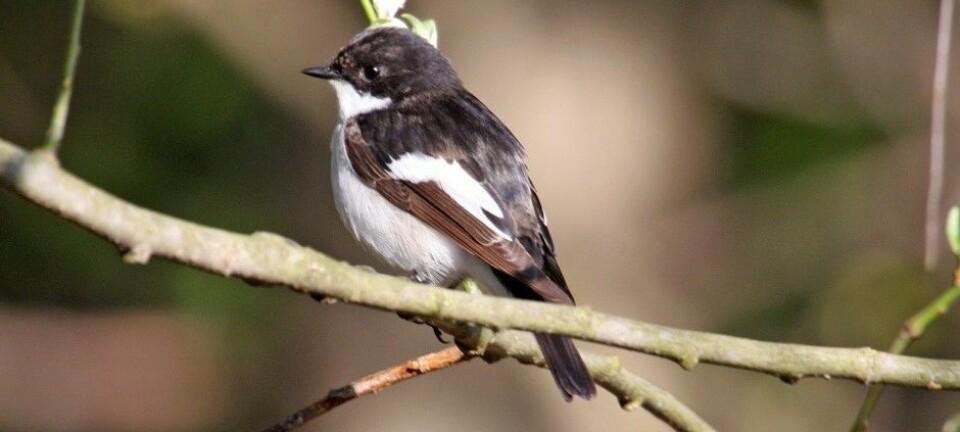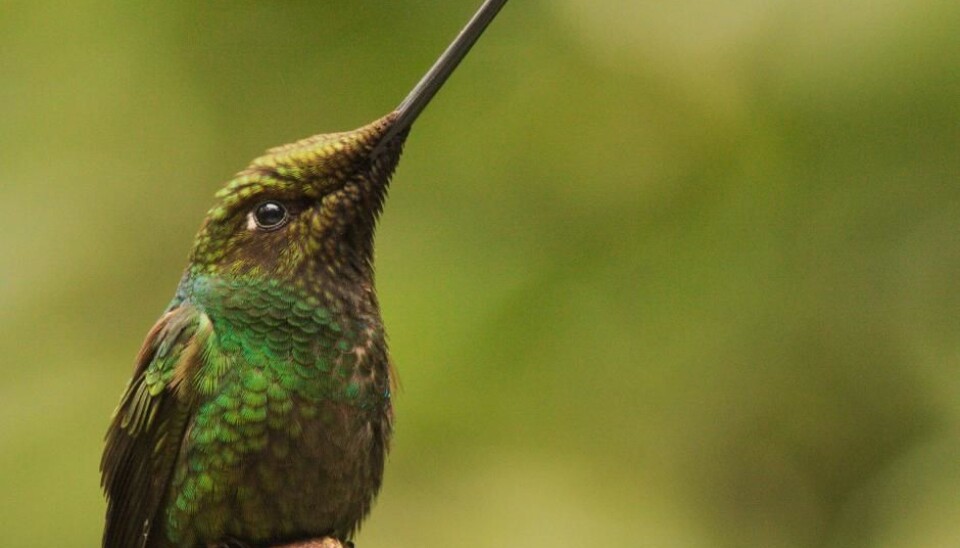
Hummingbirds are ecological super-specialists
...and thus vulnerable to climate change and habitat destruction.
Summer in Europe means buzzing bees and flapping butterflies flying between flowers to collect pollen and drink nectar.
When insects visit flowers, pollen grains stick to their bodies and are then transferred to the next flower they visit. In this way, insects play an important role as pollinators, ensuring that seeds and fruit develop. This is to the benefit of both nature and us humans.
Across the Atlantic, in the tropical regions of the Americas and the Caribbean islands, other unique creatures are busy doing similar jobs: Hummingbirds are a great example.
Hummingbirds drink nectar from various types of flowers, and each type of hummingbird is specialised, meaning particular types of hummingbird prefer certain flowers. This partly explains how these magnificent birds can coexist while not outcompeting each other.
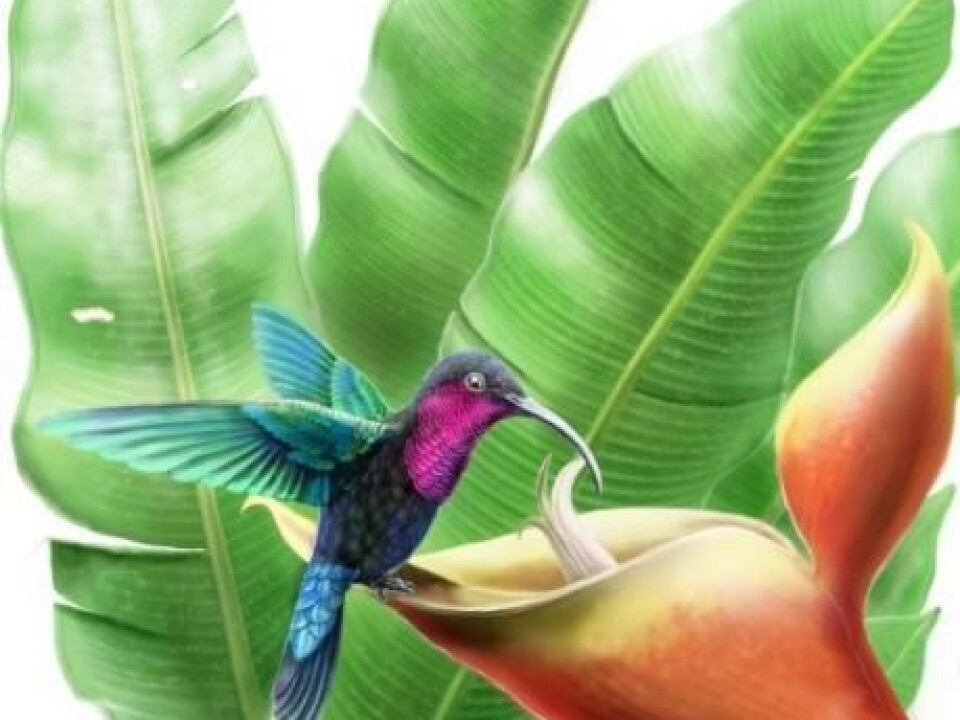
At the Center for Macroecology, Evolution and Climate at the University of Copenhagen, Denmark, we are studying just this.
We have looked at specimens from the Natural History Museum’s collections, and combined this with field observations of hummingbirds from remote parts of the Americas and the Caribbean. In doing so, we have identified the environmental conditions under which specialised hummingbird-plant interactions have evolved, and the impacts climate change and habitat destruction might have on the birds’ survival.
Flowers adapt to the hummingbirds
Hummingbird-pollinated flowers are most commonly found in the understory of lowland rainforests and in the cloudy forest of tropical mountains.
Scientists believe that many plants in these regions rely on hummingbirds as pollinators because bees and other flying insects do not thrive well in the very rainy conditions.

Plants that attract hummingbirds typically produce more nectar than insect-pollinated plants. They also typically have reddish, unscented flowers, which makes them difficult for bees and other insects to find.
Read More: Hummingbirds can fly with almost no oxygen
…And hummingbirds adapt to the plants
But it is not only the plants that have evolved to attract hummingbirds.
Hummingbirds have also evolved to access the nutritious nectar that the plants produce.
One of these specialisations is hovering flight. The mechanics behind this type of flying are unique among birds, and enables the hummingbird to fly backwards and hover mid-air to drink the nectar.
Another adaptation is the birds’ small size. Hummingbirds are among the smallest birds in the world. The smallest being the Cuban bee hummingbird (Mellisuga helenae) at just five to six centimetres long and two grams in weight.
Their tiny stature allows them to survive on a diet consisting almost exclusively of nectar, while their long, pointy bill allows them to reach the nectar from their preferred flowers. In fact, hummingbird bills come in a wide variety of shapes and sizes, from completely straight to curved, some by nearly 90 degrees.
Read More: Why do these birds throw themselves off cliffs?
Their bills are longer than their body
All hummingbirds – approximately 350 different species in total – survive almost exclusively on nectar. This is why scientists think that many hummingbird species have become specialised to forage on specific flowers that few other hummingbirds can reach.
Hummingbirds hold yet another world record among birds: The sword-billed hummingbird (Ensifera ensifera) lives in the high Andes and is the only bird in the world whose bill is longer than their body.
It is often seen sitting with its head held in an upright position just to keep balance. However, the long bill is beneficial as it enables the bird to reach nectar hidden deep in the long corollas of passionflowers.
Read More: Bird senses can improve drone navigation
Hummingbird-plant networks are millions of years old
The unique relationship between hummingbirds and their flowering plants have evolved over millions of years. It began when the ancestor to modern hummingbirds colonized the Americas about 22 million years ago.
Individual hummingbirds do not often evolve with single species of plants. Scientists investigate hummingbird-plant relationships as so-called networks of interactions between coexisting species.
These networks have implications for the entire function of ecosystems. In fact, studying these interactions between networked species could help us understand why certain places have such a rich biodiversity.
Read More: Northern European peatland birds down more than one third since 1981
When hummingbirds specialise, many species can coexist
In one of our studies, we compared networks consisting of hummingbirds of different body sizes and bill shapes with networks where hummingbirds were more alike.
Hummingbirds with different body size and bill shapes tended to specialise more on specific flowers, while birds of similar attributes are not so fussy.
For example, large hummingbirds with long bills are specialised in accessing flowers that produce a lot of nectar but are protected by long floral corollas. These flowers are almost inaccessible to other smaller, short-billed hummingbirds. These smaller, short-billed birds tend to stick to small flowers, which the larger birds often ignore as they produce less nectar.
So, the partitioning of nectar resources results in reduced competition between species, and allows species rich ecosystems to become established and maintained.
This specialisation to particular types of nectar resources could explain how so many hummingbirds are able to coexist so successfully.
Read More: The great escape: Birds fly away from disease
Tropical mountain hummingbirds are vulnerable specialists
But body size and bill shape are not the only important drivers of specialisation; the geographical location also has big implications for how hummingbirds and plants have managed to adapt to one another.
Many hummingbirds that live in tropical mountains are endemic, meaning that they have small geographical distributions occurring only within those specific mountains.
Our research shows that hummingbirds in tropical mountains are often specialised to just a few types of flowers. Consequently, these hummingbirds are vulnerable if their flowers disappear.
This means that human-induced climate change and habitat destruction may disrupt relationships between species, like hummingbirds and their plants, which have coevolved over millions of years.
In this way, the very basis of existence for both hummingbirds and plants is undermined.
Read More: Scientists solve old mysteries of bird migration routes
Using hummingbirds as model organisms
Climate change and habitat destruction do not only affect interactions between hummingbirds and plants, they have implications for all species on Earth.
So, understanding the impacts for certain indicative example species, so-called ‘model organisms,’ could provide an early warning for the types of consequences we might expect to see in other species.
In this respect, understanding the interaction between hummingbirds and plants could help us reach a general understanding of the state of nature more broadly and its vulnerability to change.
---------------
Read this article in Danish at ForskerZonen, part of Videnskab.dk
Translated by: The authors
Scientific links
- Dalsgaard, B, […], Rahbek, C. 2018. Trait evolution, resource specialisation and vulnerability to plant extinctions among Antillean hummingbirds. Proceedings of the Royal Society B 285: 201727542
- Maruyama, PK, […], Dalsgaard, B. 2018. Functional diversity mediates macroecological variation in plant-hummingbird interaction networks. Global Ecology and Biogeography: DOI: 10.1111/geb.12776
- Sonne, J, […], Dalsgaard, B. 2016. High proportion of smaller ranged hummingbird species coincides with ecological specialization across the Americas. Proceedings of the Royal Society B 283: 20152512

